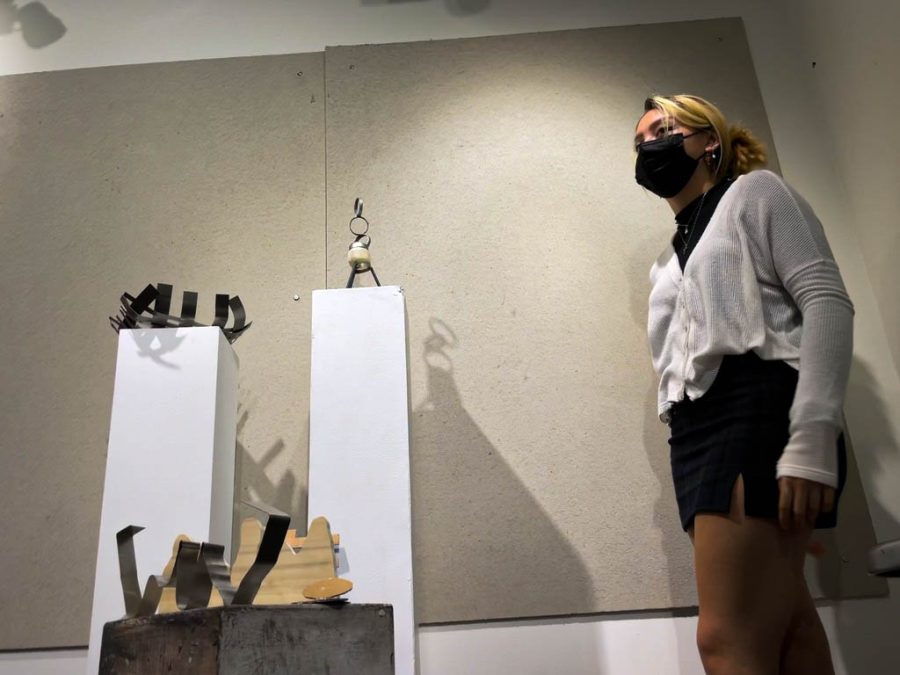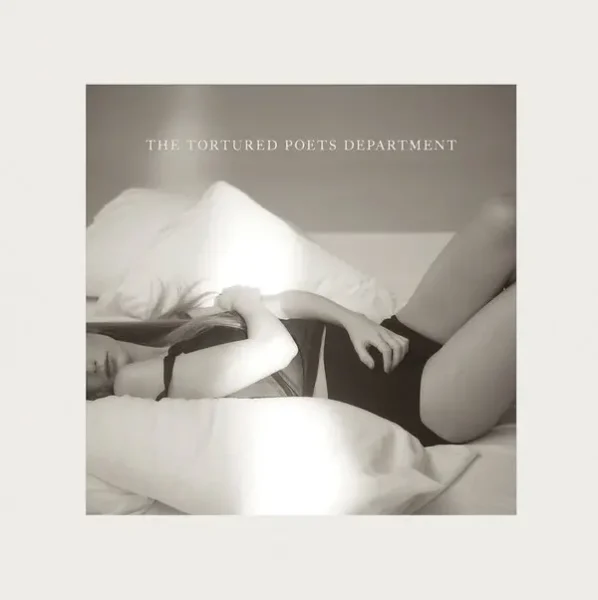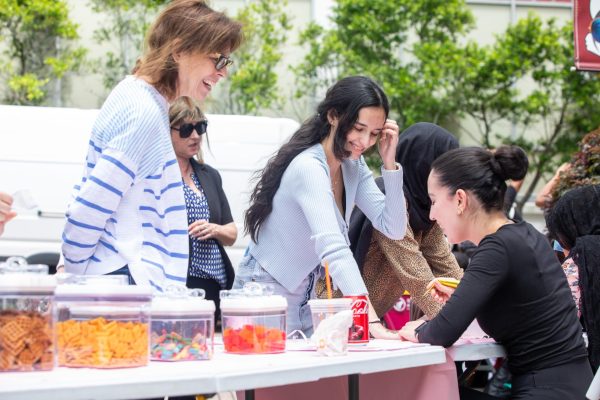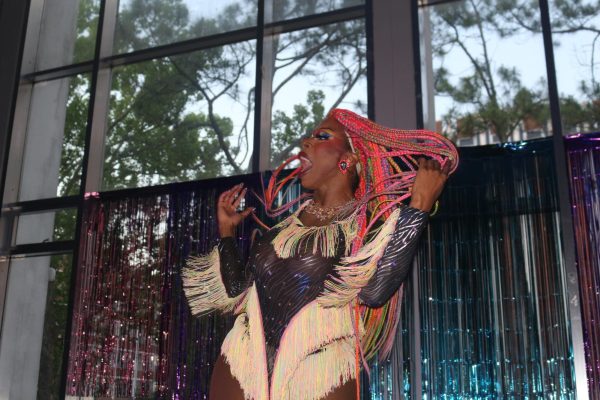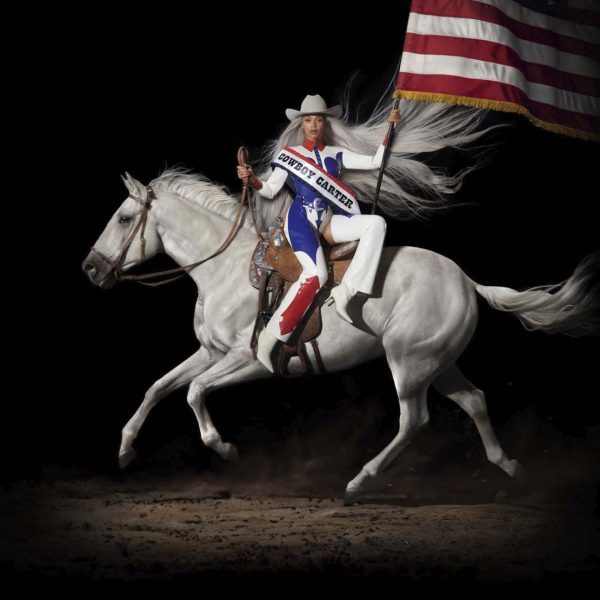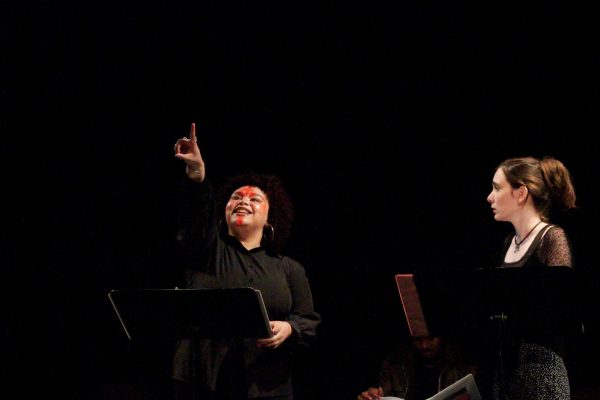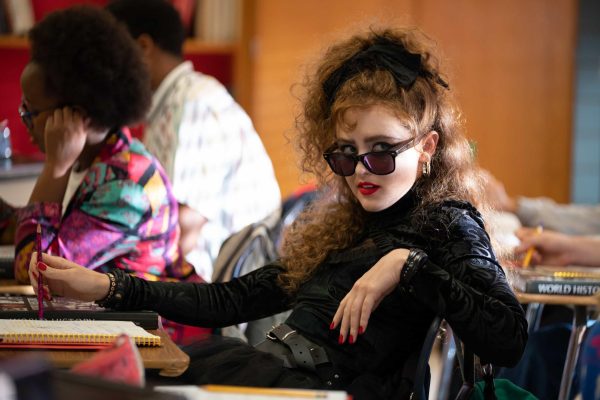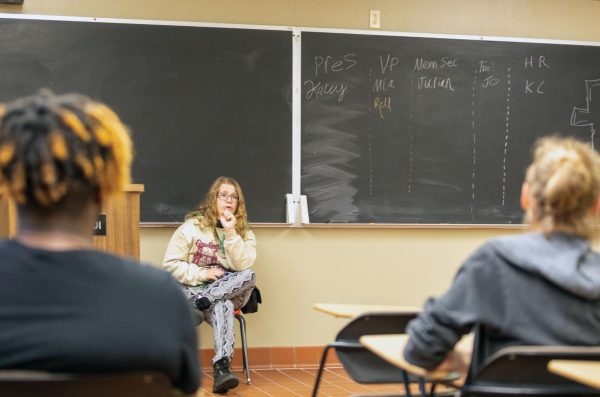Art students benefit from Loyola’s sculpture spaces
Carving Out Space
Crimonology senior Raquel Zumeata stands by her sculptures in the studio arts critique space in Monroe Hall Nov 9. Zumeata is a student in a sculpture class that uses Loyola’s wood and metal shops to create; students and professors hope sculpture continues when studio arts merges with design.
Students and professors in Loyola’s studio arts program hope sculpture can thrive in its new department once the major merges with the graphic design program within five years.
Art professor Sara Mandandar said design is primarily two-dimensional and worries sculpture at Loyola could suffer.
“Sculpture is an area where you learn a space and how to work in a space, which is so important in art,” Mandandar said.But chair of the design department Daniela Marx said design is three-dimensional too. She reminded students that learning furniture, packaging, and environmental design is part of working in three dimensions. Marx said that although sculpture might look different, the design program can still make it happen by using Loyola’s wood and metal shops.
Loyola’s studio arts and design programs are merging as design presents more viable career options post graduation, Marx said. The studio arts program also currently has no full-time faculty, according to Mandandar. The merge will allow full-time professors to dedicate time to designers so that they can succeed even after Loyola, Marx said.
Criminology senior Raquel Zumeata said she took a sculpture class her second to last semester at Loyola “for funsies.” She encouraged everyone, regardless of major, to take a class, which Marx said is likely to continue after the degree merge.
“I get to make really whatever I want for the different assignments, which is awesome because you get to do whatever your imagination will let you and the machines will,” Zumeata said.
Students visit Monroe Hall’s critique space after each project in sculpture to discuss how they might be able to improve, Zumeata said.
“They’re never bad,” she said. “They’re never putting me down on my work, so it’s always just different perspectives and it’s always great to hear good things about my work said differently through different people.”
Mandandar said collaboration that is made possible through sculpture is vital, and Marx said three-dimensional art is important to the future of design.

Gabby Killett has been an award-winning journalist for The Maroon since her freshman year in 2019 before helping it win the top award in college media,...


